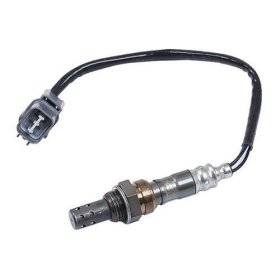When to replace Oxygen Sensors
Your vehicle’s oxygen sensors play an important role in the optimal operation of your vehicle, but these parts are often overlooked when performing regular vehicle maintenance. The main reason for this is because many automobile owners do not know the symptoms of bad oxygen sensors, and only learn of the issue when the check engine light sparks up on their dashboard or their vehicle fails an emissions test. The role of your oxygen sensor is simple; it performs tests on your car’s exhaust to determine how much oxygen is in it. It then transports the data to your vehicle’s computer, which uses the findings to create the perfect air to fuel mixture for optimal engine performance. On top of poor engine performance, a bad oxygen sensor will have an increased negative impact on the environment as it releases higher levels of pollution into the air
That is all fine and dandy, but you probably want to know when to an replace oxygen sensor on your car or truck.
O2 sensors are a relatively inexpensive part to replace on your vehicle. If you have a suspicion about your part being faulty, it is best to change it earlier than later. It is not very common for an O2 sensor to completely fail, as it more often fails over time. If you do not know failing oxygen sensor symptoms, you will not be able to diagnose the problem until it completely fails. In the meantime your vehicle will suffer from poor engine performance which can have long term effects on your engine life. Typically, mechanics have recommendations on the replacement intervals for these parts. Cars and Trucks from the 1970’s to 1990’s that were equipped with unheated one or two wire oxygen sensors should have the part replaced around the 45,000 mile mark. For automobiles that were manufactured in the 1980’s to 1990’s, and were equipped with heated three and four wire oxygen sensors, it is recommended you replace the part every 65,000 miles. All cars and trucks that were manufactured in the last fifteen years should have their O2 sensors replaced every 60,000 to 90,000 miles. Replacing your sensor at these intervals will lower the level of pollution that your vehicle emits while playing a preventive role in the cause of damage to the vehicle.
Ok, so that is the recommended replacement interval. What are some bad oxygen sensor symptoms?
The first and easiest symptom to track is the check engine light on your vehicle. Although this can be attributed to a number of different malfunctions on your vehicle, in higher mileage cars and trucks there is a chance it can be the result of a bad O2 sensor. Running a proper diagnostic when the light shows up will be able to confirm your suspicions. You may also notice that you have been getting extremely poor gas mileage as of late. A bad oxygen sensor will lead to an air to fuel ratio that is either too lean or too rich which in turn causes an over consumption of fuel by your vehicle’s internal combustion engine. Finally, your engine may show some faulty oxygen sensor symptoms. Some common engine O2 sensor symptoms that you can experience are a rough engine idle, a misfiring engine, or an engine that hesitates or stumbles when attempting to accelerate. Replacing a faulty O2 sensor should be a fairly simple job for the backyard mechanic, but you may run into problems if your part has experienced excess corrosion or rust. If you experience any problems in the installation, just bring your vehicle to a trusted mechanic.
If you have been experiencing these problems, don’t hesitate to replace your O2 sensor. It helps keep the environment cleaner and will lengthen the life of your vehicle. Now that you know when to replace oxygen sensors and how to diagnose bad oxygen sensor symptoms, you can make the right decision for your automobile.

Oxygen Sensor Symptoms
by
Tags:

Leave a Reply